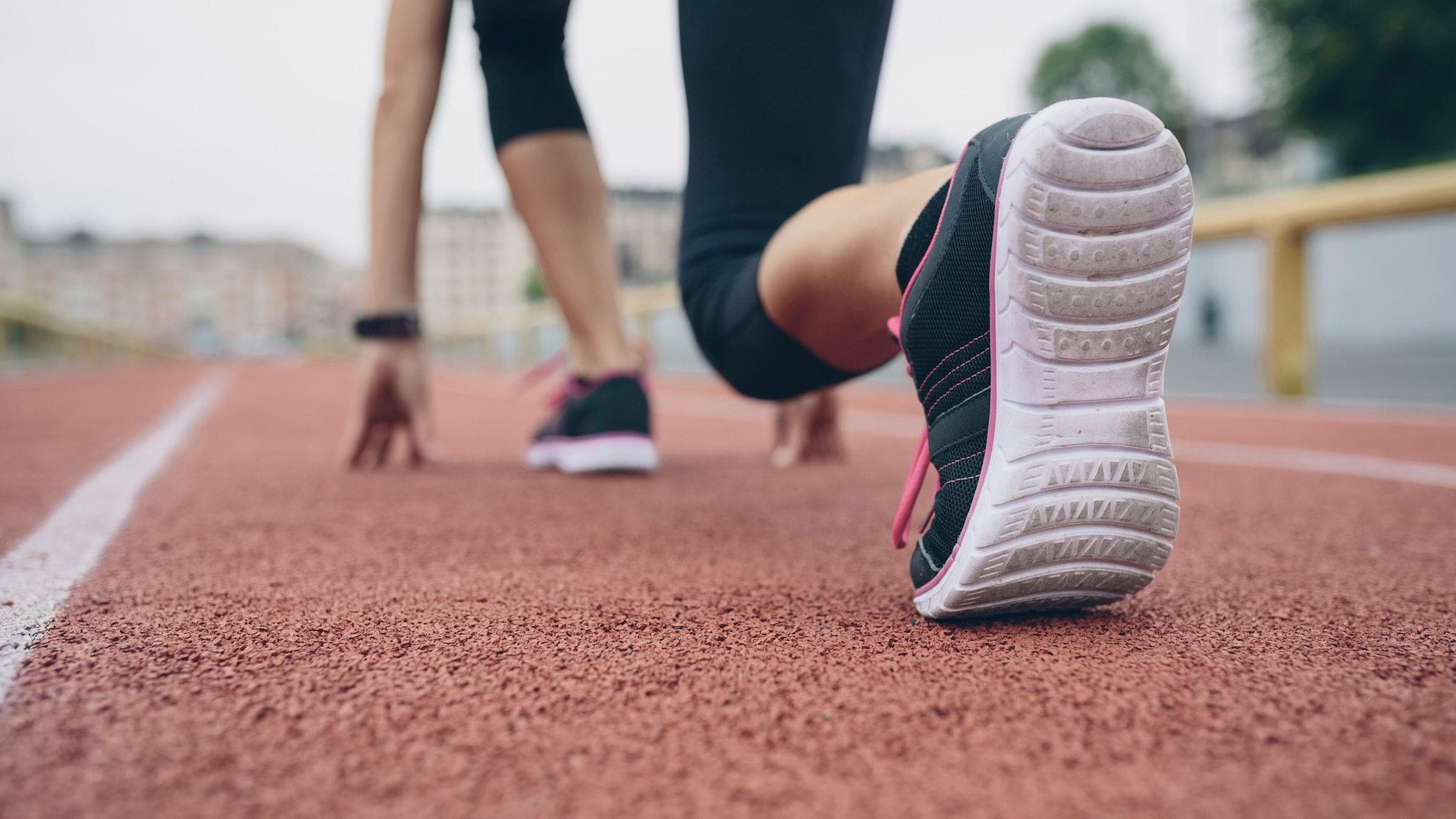What is lactate threshold – and is it useful for runners?
How to work out your lactate threshold and then use it to improve running speed and consistency

Most runners, especially those that train hard, will have felt the painful outcome of reaching their lactate threshold at some point. Normally, on reaching this stage, you will feel like stopping right away and vomiting. But why does this happen and is lactate threshold a useful term for runners?
Lactate threshold is defined as the intensity of exercise at which lactate begins to accumulate in the blood faster than it can be removed. The problems with this is that this acid is added to the blood and that is what makes you feel so wretched. The feeling passes when you stop but it is very unpleasant.
Further to this definition, Mike McGurn, a strength and conditioning coach who works with a range of athletes, said: “When runners reach their lactate threshold, the muscles start to rapidly fatigue – and when a runner exceeds their threshold, fatigue starts to increase at an accelerating rate."
However, knowing your lactate threshold can be helpful to runners, other trail or road runners, because it can help you to determine how hard to train, or when to push yourself during a race.
McGurn adds: “Your lactate threshold pace is what runners call the pace they can maintain for around an hour.”

How do I work out my lactate threshold?
There are four commonly used field tests for calculating lactate thresholds. They include the VDOT (VO2 Max) test; the Conconi method; the 3,200-metre time trial; and the 30-minute test.
Of the four, a comparison of methods for estimating the lactate threshold carried out at East Carolina University, suggests the 30-minute test is the best for the average runner for estimating lactate threshold. Usefully, it is also the easiest and cheapest to perform.
All the latest inspiration, tips and guides to help you plan your next Advnture!
McGurn explains: “To do the 30-minute test lactate threshold test, warm up and then gradually accelerate to a tempo, which you believe you can sustain for 30 continuous minutes, but not longer.
“When this tempo is attained, your 30-minute time period begins. During this 30-minute run you may vary your pace up or down slightly, as necessary, but the idea is to work at your best-possible intensity for the full 30 minutes.
“The 30-minute field test can be completed on a track or measured course, or with a GPS device.”
Then you need to do a bit of mathematics. According to the science, to estimate your lactate threshold, divide the distance covered in metres during that time by 1,800 seconds (30 minutes).
For example, a runner covering 8,000 metres in 30 minutes has an estimated lactate threshold of 8,000 metres divided by 1,800 seconds = 4.5 meters per second.

Other methods for measuring lactate threshold
A number of the best GPS watch brands claim to be able to measure lactate threshold level by tracking heart rate and pace. For example, you can learn from Garmin how to do this.
Treadmill intervals can also be used to discover a runner’s lactate threshold, too. This is a more scientific approach and is usually carried out in a laboratory.
McGurn explains: “Another way to assess or estimate lactate threshold is to run intervals of 3½ minutes on a treadmill, increasing the speed with each one.
“After each interval measured the lactate in the blood, as well as recording heart rate.
“The body produces the lactate and as soon as that’s in your blood you can measure that in millimoles per litre of blood.
“Using this data, the two thresholds are determined by looking at increases in the amount of lactate in the blood and once we hit the second threshold pace the lactate starts to rise quickly.
“The results also show the limitations of using heart rate to work out a person’s lactate threshold. So, it can vary, but roughly we look at 75% and then 85-90% [of your max heart rate] as the two thresholds.”

How can I use a lactate threshold calculation?
If we take the example from the 30-minute test, the lactate threshold measurement of 4.5m/s can be used to inform runners about the right training tempo or running pace for a 400-metre interval. So the tempo of 400/4.5 = 89 seconds per 400 meters or just faster than a six-minute mile.
For the average runner, this method helps to work out a useful lactate threshold measurement but it won’t be as exacting as that which is measured in the laboratory. Still, it can be useful for training and improving performance.
Once you have your lactate threshold, your subsequent interval training can be created.
McGurn, who is a Bio-Synergy ambassador, suggests some effective workouts using lactate threshold running pace. The aim of the sessions is to improve strength and sustainable pace.
- 2 to 4 x 2,000m at two seconds per 400m faster than your estimated lactate threshold
- 3 to 5 x 1,200m or 1,600m at four seconds faster per 400m
- 6 to 8 x 800m at eight seconds faster per 400m
- 10 to 12 x 400m at 12 seconds faster per 400m.
McGurn adds: "All of these sessions should have equal-duration jog or walk for recoveries. For example if you run 400m in 90 seconds, you should jog or walk for 90 seconds to recover each time.
“Alternating these lactate threshold-enhancing workouts from week to week will add real lift to your lactate threshold, bolster your overall fitness and should carve large chunks of time from your race performances.”
How can lactate threshold data make you a better runner?
Mike describes a runner’s lactate threshold as “defining the upper limit of sustainable efforts in training and competition”.
He adds: “Once you cross over and rely more heavily on your glycolytic system for energy, you’re exercising on borrowed time. The accumulation of blood lactate will hinder the ability of your muscles to contract and you will be forced to slow down or stop.”
This means that the more work you can do before reaching lactate threshold, the better. If the pace you can hold at your lactate threshold is higher than the pace your competitor can hold their lactate threshold, you go faster, reach the finish first and win.
McGurn says: “Most usefully, being able to do more work at lactate threshold also means maintaining a lighter pace is even easier. So, while your main rivals are burning energy fast, running at their limits, you can stay right with them and rely primarily on your aerobic system. This saves valuable energy for hard efforts later."
However, the lactate threshold information is only useful if you incorporate it into regular training. Working on improving pace or power at lactate threshold typically occurs after a strong foundation of aerobic work.
For the summer competitor, this usually means performing lactate threshold work in the mid-spring. Following several training blocks devoted to targeted interval workouts, you’ll progress to even harder, yet shorter, workouts.
McGurn adds: "Consistency is the key to improving performance at lactate threshold. You must accumulate a lot of work at a steady workload to place adequate stress or load on the system. Since you can’t spend much time working above lactate threshold, these intervals should be at an intensity just below threshold."
For many runners, the introduction to lactate threshold training is through a running club or a coach. It can be key to running faster times but does require a sensible and consistent build up.

Fiona Russell is a widely published adventure journalist and blogger, better known as Fiona Outdoors. She is based in Scotland and is an all-round outdoors enthusiast with favorite activities including trail running, mountain walking, mountain biking, road cycling, triathlon and skiing (both downhill and backcountry). Aside from her own adventures, Fiona's biggest aim is to inspire others to enjoy getting outside and exploring, especially through her writing. She is also rarely seen without a running skort! Find out more at Fiona Outdoors.
